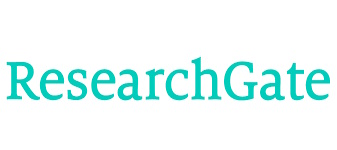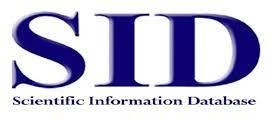Submissions
Submission Preparation Checklist
All submissions must meet the following requirements.
- This submission meets the requirements outlined in the Author Guidelines.
- This submission has not been previously published, nor is it before another journal for consideration.
- All references have been checked for accuracy and completeness.
- All tables and figures have been numbered and labeled.
- Permission has been obtained to publish all photos, datasets and other material provided with this submission.
- All citations and references should be written with Endnote or Word Citations. Authors should add PMID, PMCID, and DOI for every reference.
Sports Sciences
This section accepts manuscripts in the following fields:
- Biomechanics: Study of the mechanics of human movement in sports, analyzing forces, motion, and energy to enhance performance and prevent injuries.
- Exercise Physiology: Examines the physiological responses and adaptations to exercise, including cardiovascular, respiratory, and muscular systems, to optimize training and performance.
- Sports Nutrition: Focuses on the role of nutrition in sports performance, providing guidelines for optimal fueling, hydration, and recovery.
- Sports Medicine: Involves the prevention, diagnosis, treatment, and rehabilitation of sports-related injuries and medical conditions.
- Sports Management: Covers the business and organizational aspects of sports, including event planning, marketing, finance, and facility management.
Psychology
This section accepts manuscripts in the following fields:
- Exercise Psychology: Applies psychological principles to enhance athletic performance, mental well-being, and overall health in sports and exercise settings.
- Sports Psychology: Explores psychological factors that influence sports performance, such as motivation, confidence, concentration, and stress management.
- Cognitive Psychology: Studies mental processes like attention, perception, memory, decision-making, and problem-solving in relation to sports performance.
- Developmental Psychology: Examines psychological changes and factors that impact individuals' development in sports across different ages and stages.
- Social Psychology: Investigates how social interactions, group dynamics, leadership, and teamwork influence sports performance and athletes' well-being.
- Personality Psychology: Analyzes individual differences in personality traits and characteristics that may affect an athlete's motivation, behavior, and performance.
- Psychophysiology: Explores the relationship between psychological processes and physiological responses during sports activities.
Public Health
Public health research plays a pivotal role in understanding and addressing the health needs of populations, promoting well-being, and preventing disease. It encompasses a wide range of topics and methodologies, all aimed at improving the health of communities and societies. This section accepts manuscripts in the following fields:
- Epidemiology: Studying the distribution and determinants of diseases and health conditions in populations to identify patterns and risk factors.
- Health Promotion and Education: Developing and evaluating strategies to promote healthy behaviors and raise awareness about public health issues.
- Healthcare Policy and Management: Analyzing healthcare systems, policies, and management approaches to enhance healthcare access and quality.
- Environmental Health: Investigating the impact of environmental factors on public health, including air and water quality, sanitation, and occupational hazards.
- Global Health: Addressing health disparities and challenges on a global scale, such as infectious diseases, maternal and child health, and access to healthcare in resource-limited settings.
- Social Determinants of Health: Examining the social, economic, and cultural factors that influence health outcomes and health disparities.
- Health Equity: Promoting fair and just distribution of health resources and opportunities to eliminate health disparities.
- Health Behavior and Lifestyle: Understanding the individual and collective behaviors that contribute to health and wellness, such as diet, physical activity, and substance use.
Emerging Technologies in Health
This section accepts manuscripts in the following fields:
4) Emerging Technologies in Health
In Sports Sciences
-
Objectives:
- To enhance athletic performance through data-driven insights and training optimizations.
- To develop technology-based injury prevention and rehabilitation programs.
- To utilize emerging technologies for talent identification and performance prediction in athletes.
- To improve the understanding of sports biomechanics and physiology using advanced analytics.
- To explore the potential ethical concerns and fairness issues associated with emerging technologies in sports.
- To assess the risks of data privacy breaches and security in sports technology applications.
-
Focus:
- Implementing machine learning algorithms for analyzing athletes' performance data.
- Developing predictive models for injury risks based on athletes' physical data and training loads.
- Integrating wearable technology and advanced analytics to monitor athletes' health and fitness levels.
- Examining the ethical dilemmas of technology in sports, such as biases in talent identification.
- Investigating the impact of technology on coaching decisions and athlete autonomy.
- Evaluating the security vulnerabilities of technology systems used in sports data analysis.
-
Scope:
- Empirical research on the efficacy of technology-driven training programs in improving sports performance.
- Studies on the accuracy and effectiveness of technology in predicting and preventing sports injuries.
- Research on the ethical implications of using technology for talent scouting and performance enhancement.
- Cross-disciplinary studies combining sports science with technology, data analytics, and biomechanics.
- Studies on the mental health implications for athletes in technology-intensive training environments.
- Research on fairness and bias in technology algorithms used for scouting and evaluating athletes.
- Analysis of the impact of technology on traditional coaching roles and athlete-coach dynamics.
- Investigations into the data privacy concerns surrounding the use of technology and gadgets in sports.
In Psychology
-
Objectives:
- To understand the psychological impact of technology and digital device overuse.
- To assess the implications of technology-driven social media on mental health.
- To explore how technology in mental health services affects patient privacy and trust.
- To investigate the consequences of technology-induced biases in psychological assessments and treatments.
- To enhance the accuracy and efficiency of mental health diagnoses using advanced technology.
- To develop technology-powered tools for personalized mental health treatment and therapy.
- To utilize technology in understanding and simulating human cognitive processes.
- To investigate the effectiveness of technology-assisted interventions in various psychological conditions.
-
Focus:
- Examining the relationship between technology interaction and social skill development, particularly in children and adolescents.
- Analyzing the links between technology, social media use, and mental health disorders like anxiety and depression.
- Evaluating the ethical considerations in using technology for mental health monitoring and interventions.
- Investigating how algorithmic biases in technology systems impact mental health care and treatment outcomes.
- Implementing machine learning for early detection of mental health issues.
- Developing and testing technology-driven chatbots and virtual therapists for psychological support.
- Analyzing large-scale data to uncover patterns and insights in psychological disorders.
- Integrating technology in cognitive-behavioral therapies and other psychological treatment modalities.
-
Scope:
- Longitudinal studies on the effects of technology and AI on social and emotional development.
- Cross-sectional and epidemiological studies correlating technology usage with mental health outcomes.
- Qualitative and quantitative analyses of patient attitudes towards technology in mental healthcare.
- Research on the representation and inclusivity of diverse populations in technology-driven psychological tools.
- Clinical trials testing the efficacy of technology tools in diagnosing and treating mental illnesses.
- Studies on the user experience and acceptance of technology-based psychological support systems.
- Research on the ethical implications and privacy concerns of using technology in mental health care.
- Cross-disciplinary studies combining technology with neuroscience, psychology, and psychiatry.
In Public Health
-
Objectives:
- To assess how technology advancements impact healthcare access and equity.
- To evaluate the accuracy and reliability of technology in medical diagnostics and the consequences of overreliance.
- To understand the socioeconomic impact of technology automation on healthcare employment.
- To identify and mitigate cybersecurity threats in healthcare technology systems.
- To improve public health surveillance and disease tracking through advanced technology.
- To optimize healthcare resource allocation and management using technology algorithms.
- To enhance the accuracy of epidemiological modeling and disease prediction.
- To leverage technology for personalized public health interventions and education.
-
Focus:
- Investigating the disparities in healthcare outcomes related to technology access.
- Analyzing the accuracy of technology diagnostic tools across diverse patient populations.
- Examining the economic and psychological impacts of technology-related job displacements in healthcare.
- Exploring the ethical dilemmas posed by technology in public health decision-making.
- Utilizing technology for real-time monitoring and analysis of public health data.
- Developing predictive models for disease outbreaks and public health emergencies.
- Implementing technology-driven strategies for efficient healthcare delivery and vaccination campaigns.
- Analyzing social determinants of health through technology to inform public health policies.
-
Scope:
- Comparative studies on healthcare quality between technology-equipped and non-equipped regions or populations.
- Systematic reviews of technology diagnostic tools' performance in clinical settings.
- Socioeconomic research on the broader impacts of technology integration in healthcare sectors.
- Policy and ethical analyses on the use of technology in public health strategies and decision-making processes.
- Empirical studies on the impact of technology applications in managing public health crises.
- Research on technology's role in reducing health disparities and improving healthcare accessibility.
- Evaluations of technology-driven public health campaigns and their effectiveness.
- Policy-oriented research on integrating technology into public health strategies and frameworks.
Privacy Statement
The names and email addresses entered in this journal site will be used exclusively for the stated purposes of this journal and will not be made available for any other purpose or to any other party.











